First off, if you think this article will be about how to successfully fish along the Great Ocean Road then you’ll need to go somewhere else. This article will instead focus on the most effective ways to ensure that you fail miserably in your attempts to catch fish along one of Australia’s most scenic drives.
Tip #1 – Fishing Experience and Knowledge are Overrated
Perhaps the most important thing you can bring with you on a quest such as this is a complete lack of understanding or experience (preferably both) of fishing in coastal waters. Given that I had never fished in the ocean, and the most recent fishing trip of any kind I’d taken was probably 15 years ago, I was off to a great start on this journey of futility.

Tip #2 – Purchase Low Quality Equipment
After you’ve ensured that you have no business even trying to catch some marine fish at the end of a line, your next step should be to purchase a rod and reel. I chose to procure this important piece of equipment from Australia’s version of Walmart. My reason for choosing this store was that I figured it would have the most illustrious selection of fine fishing equipment. To my delight, they indeed had a great selection of fishing poles; a total of 4, and all of the same model. I happily selected the pole in the back because it was the only one still in it’s packaging (an encouraging sign). This turned out to be a 12 foot long “surf rod” that cost a whopping A$39. That is roughly $30 USD. The fishing pole and it’s A$39 price tag exuded the utmost quality.
I next walked over to their selection of fishing lures to pick out something that the fish would find intriguing. When selecting lures for ocean fishing refer to Tip #1 and make sure you don’t do any research about the types of fish you may catch or the type of lures they like to chase after. I mean, why rely on the experience of others? Remember, we’re trying to be as unsuccesful as possible here. Thus, armed with zero knowledge about my prospective quarry, I selected a few different lures of various sizes. I of course selected some lures that were a good 5-6 inches long as well, because who knows, maybe I’d be able to snag a 8 foot long shark with them? Gotta dream big!!
Tip #3 – Enjoy a Little Scenery of the Great Ocean Road before Fishing
Our first stop along the Great Ocean Road was in a town called Torquay. Famous for being the Surf Capital of Australia, this town hosts the annual “Rip Curl Pro” at Bells Beach, one of the world’s premiere surfing competitions. After watching the surfers for a while we continued down the highway, which skirts right along the coastline itself forcing us into seemingly constant hairpin turns. Though the highway had us feeling dizzy and nauseous at times, it was an absolutely wonderful drive. We ended the day at a small campsite called Skenes Creek, right along the ocean.
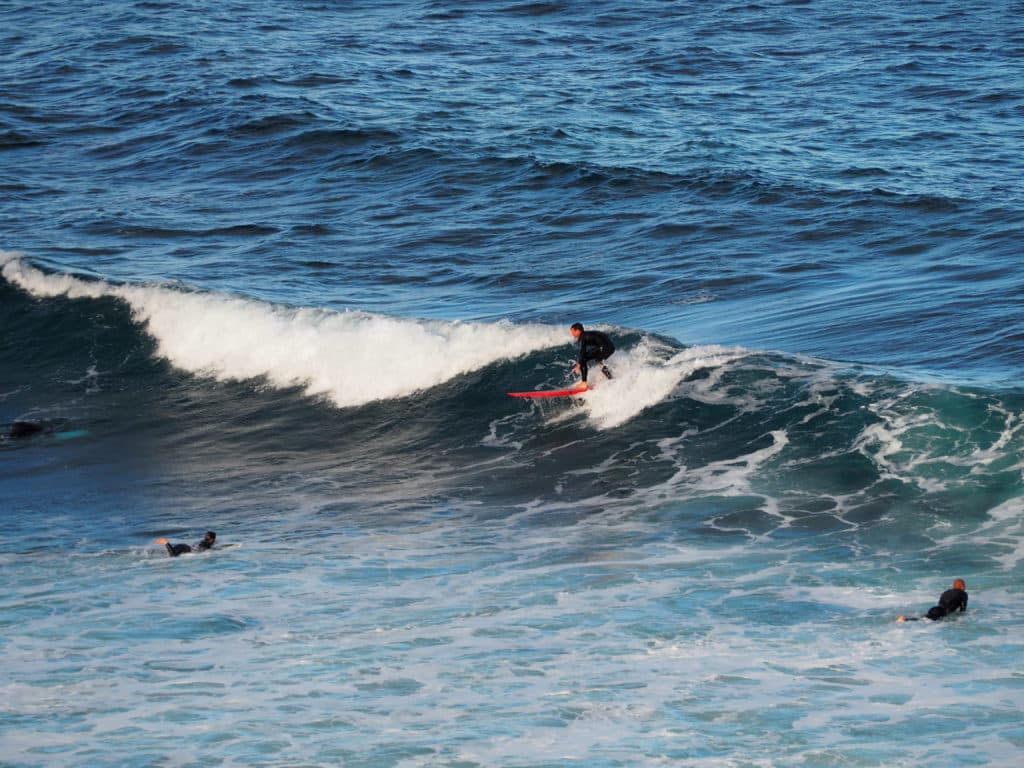

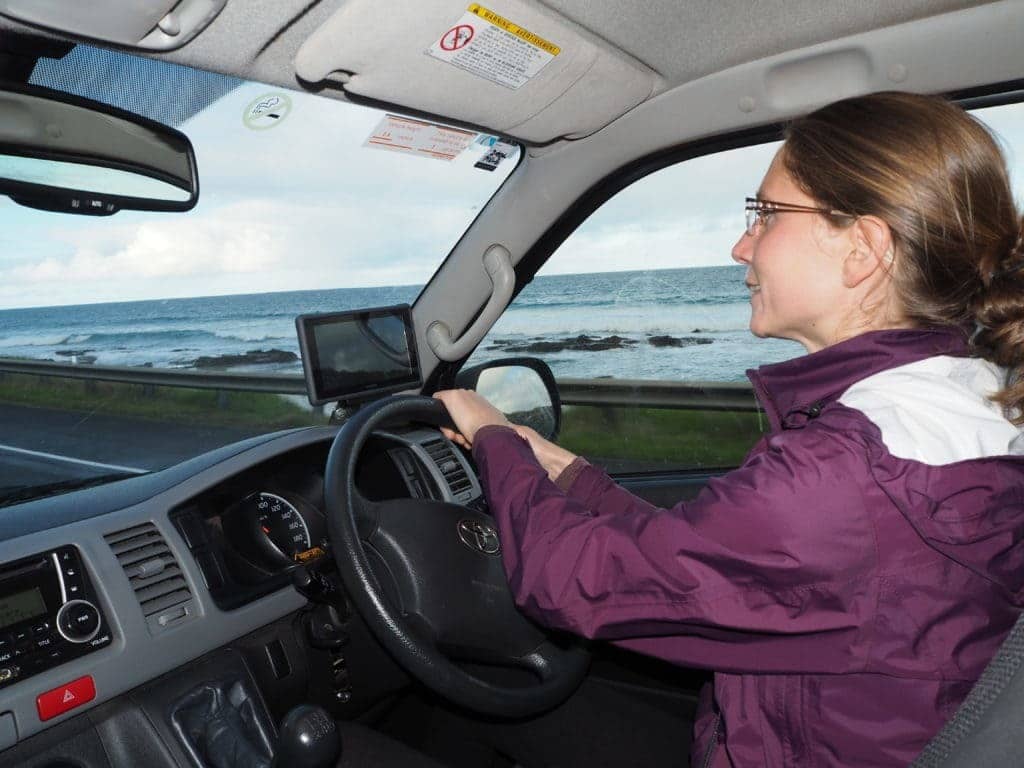
Tip #4 – Pick a Terrible Spot to Fish
From our camping spot I spied what I imagined would be a great spot to start reeling in the big ones. It was a rocky outcropping on the far end of the beach. I assembled my fishing pole and attached a 2 inch long lure. I figured I’d start small, then after catching a few hundred fish I’d graduate to the larger lures I had purchased. I headed out onto the beach and made my way towards that rocky outcropping. Once there, I prepared for my first cast. I dipped the rod slightly behind me and swung it forward. The lure flew majestically for about 15 ft and landed in the middle of some waves crashing around rocks that were just under the surface. The perfect spot to catch some trophies! Here the fish were sure to be battered senseless against the submerged rocks and would undoubtedly search in vain for some sort of relief from the relentless ocean. My lure was to be this relief! Unfortunately the ocean had other ideas, for it battered my lure mercilessly against the rocks instead. I reeled in and tried to cast a little farther. Again, the lure flew a majestic 15 ft and landed in the same spot to be battered by the waves again. Alright, time to try something different. I reeled in and cast in a different direction, this time straight into a giant pile of bull kelp. You know, the kind of kelp that is capable of entangling 400 pound sea lions. Luckily I was using my small lure, so the hook didn’t snag the kelp and I was able to quickly pull it back in before it was swallowed by those long green tentacles. By now it had gotten dark, so I figured it was a good idea to head back to our campervan before I unwittingly snagged myself on the next cast and threw myself into the ocean.
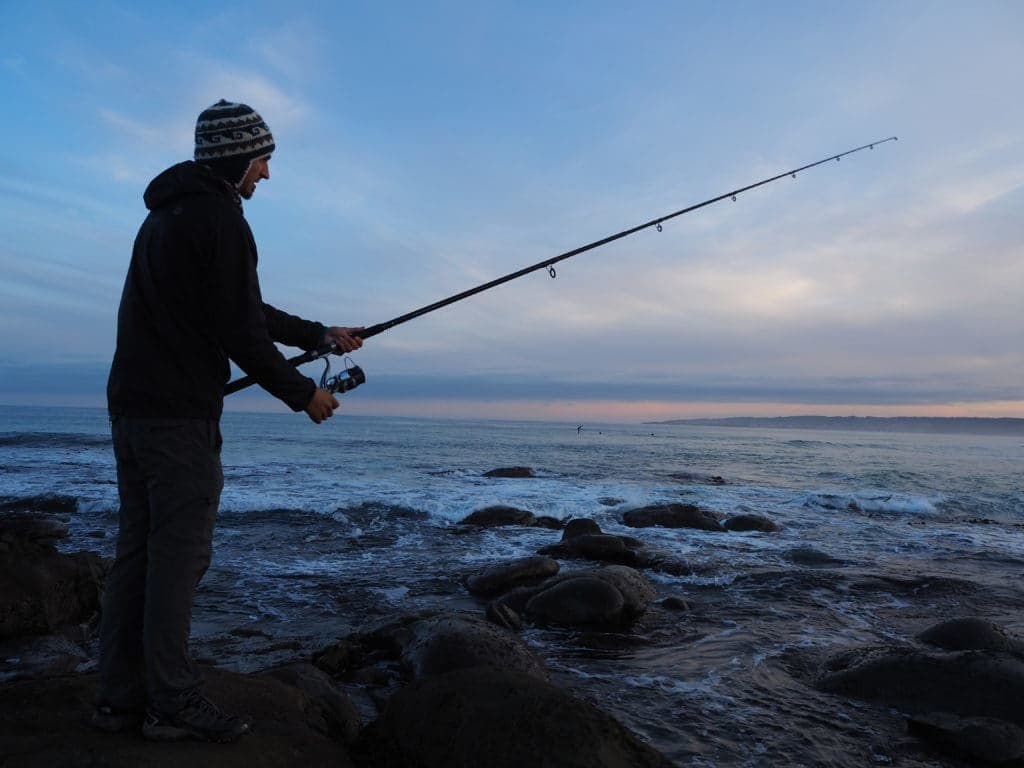
Tip #5 – Fishing Got You Down? Name a Koala to Lift Your Spirits
The next morning we took a stroll along the beach to soak in the cool ocean breeze. Even though I hadn’t hooked the big one along these shores, it was still a rather pleasant walk. We finished our breakfast, packed up our things, and then pulled out of Skenes Creek to continue along the Great Ocean Road.
We headed through Cape Otway National Park where we spotted our first Koala. He was a cute little fluffy guy that was gobbling up the leaves of the gum tree he was sitting in. We named him Fred!
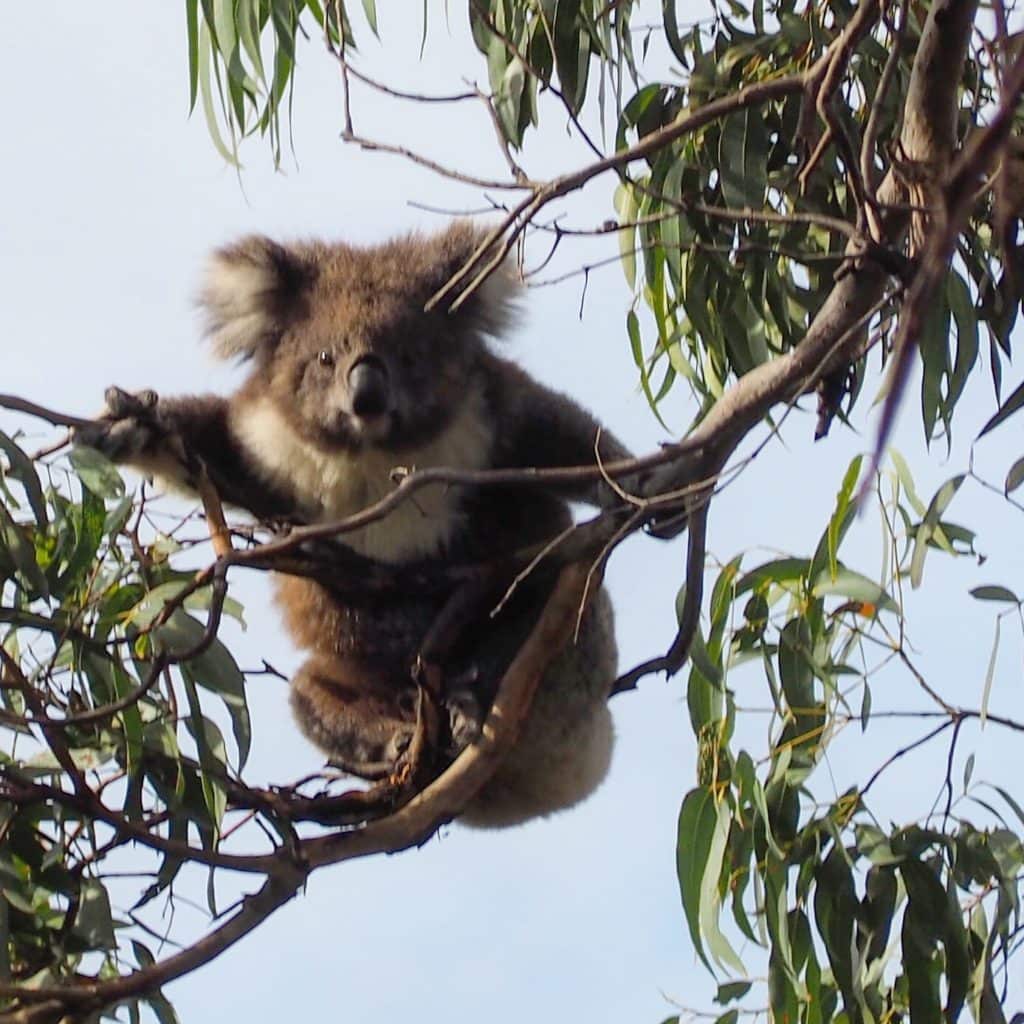
Tip #6 – No Luck at Sea? Try Inland
As evening drew near again, we selected a free camping spot that was situated next to a creek. I figured I might as well try some fresh water fishing while we were there. As luck would have it, this creek flowed into a little swimming hole right by the campsite. Surely this would be the home of some giant bass! Nevermind the fact that I had no idea if bass even existed in Australia. I was going to find out! This time the 15 foot cast from my 12 foot surf rod landed my lure in the exact right spot. Dead center in the middle of the pond. As the lure slowly sank I thought to myself, “perhaps the fish would like to see this lure be a little more lively”. So I began to slowly reel it in. I repeated this about a dozen times. Cast 15 feet, let the lure sink, slowly reel in, cast again. It turns out there are no bass in Australia, at least not in this pond.
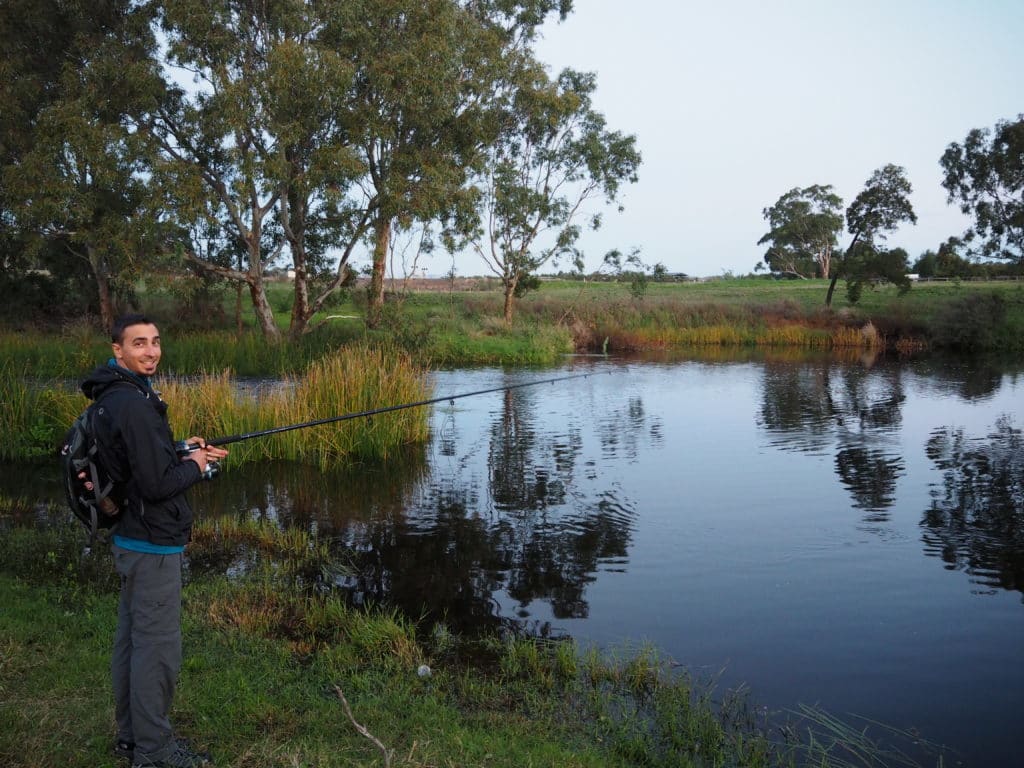
Tip #7 – Never, I mean Never, Ask for Fishing Advice
Now, if you want to continue to be an unsuccessful fisherman, don’t make the mistake that I made next. Don’t stop in at a BCF Fishing outlet and ask for advice. The staff will be far too helpful and friendly. They will tell you that you essentially have a 0% chance of catching fish off the coast using lures. They’ll also tell you that if you don’t have a massive weight attached to your fishing line, it will just wash up to shore sans fish. Perfect! Little did they know that my intent wasn’t to catch fish, it was simply to enjoy the ocean views while I pretended to be a fisherman!
Nevertheless, I reluctantly took the advice of the friendly associate and purchased some hooks, weights, and bait that were more suitable for ocean fishing. I was now slightly more experienced and much better equipped to land some trevally, snapper, flathead, salmon, or whiting. Yes, the folks at BCF fishing even told me what kind of fish I might catch. How rude!
With an updated knowledge and upgraded equipment, I headed out to the breakwater pier in Warrnambool (amazing town name by the way) to see if I could continue my streak of empty casts.
Tip #8 – Let the Local Critters Help You Fail
As I headed out to the breakwater a feeling of dismay came over me as I spotted numerous other anglers already fishing from the concrete structure. As someone who is trying desperately hard to fail at fishing, the sign of other experienced anglers on the breakwater was an ominous sign that I had picked a fishing spot that was far too good. Since I was already halfway there I decided not to turn back. My spirits lifted a bit though as I passed several of the other fisherman, for none of them had any fish in their buckets. Perhaps this was indeed a good spot to not catch fish after all.
I pulled out the bag of bait I had purchased and grabbed a pilchard (a small fish) and cut it into 3 pieces and attached two of them to the two hooks on my line. I dipped my pole back and threw it forward. Imagine my astonishment when the bait failed to land 15 feet in front of me like my weightless lure did. Instead my line, now weighted with what felt like a boat anchor, sailed off into the horizon for about an hour before falling into the waters of the bay. Thankfully the bait I had attached to my hooks sailed off into an altogether different direction to land as tasty (and completely safe) snacks for the fish I was trying not to catch. After congratulating myself for launching such a herculean cast, I began the long process of reeling in a nautical mile of fishing line. I grabbed some more bait and tried a little harder to attach it to my hooks. Miraculously, the bait managed to stay on during the next monster cast and the properly baited hooks came crashing down into the waters near the coast of New Zealand (or so it seemed). I was finally in business.
Now, while these casts were indeed perfection, I made sure they were landing in a bay that had a large sea lion swimming around in it. This way I ensured that any fish I would potentially hook would promptly be stolen by this clever creature, as happened to the lucky bloke fishing next to me.
Tip #8 – Don’t Talk to Strangers
It was about this time that I spotted an older gentleman, about 75 years young, on the seaward side of the concrete breakwater (the side without a sea lion) who looked exactly like a fisherman should: rubber boots, 50 year old rain jacket, and grubby old stocking cap. I decided that it wouldn’t hurt to ask this man a few questions about ocean fishing so I made my way over to him after I had reeled my line in, again sans fish. I struck up a conversation by first asking him if he fished in this location often. He said he came to the spot occassionally, but lately a lot more. Turns out he recently had surgery on his foot which had forced him to do a lot more fishing instead of his preferred hobby: surfing. Yes, you read that correctly. This friendly 75 year old Australian fisherman was actually a surfer at heart, and was only put off of his favorite hobby temporarily while his foot healed up. He showed me the proper way to put bait on my hooks so they wouldn’t fly off as I cast, explained the reasoning behind the size and shape of the weights I needed, and even gave me a few chunks of the bait he was using. I ended up chatting with the man for a couple of hours, completely forgetting that I was there to fish in the first place.
We chatted about fishing, his 50 year old fishing rods, surfing, his surfing addicted sons, his favorite places in Australia, my favorite places in Australia so far, and even about refugees. He spoke with conviction about how Australia needed to do more for the refugees that come to their shores by boat and I spoke about Kathy’s experience in working with refugees in New York. This man seemed to epitomize the stereotypical friendly Australian.
It was getting late in the afternoon so I packed up my things and bid farewell to the man. I left the breakwater without catching any fish but was nevertheless happy to have spent several hours there.
Tip #9 – Enjoy Some More Scenery of the Great Ocean Road
Warrnambool is at the end of the Great Ocean Road, so we turned around and made our way back east towards Melbourne. I wanted to spend one more afternoon fishing along the way back, but we first had to stop and have a look at the famous 12 Apostles. The 12 Apostles are a group of large rock stacks standing out in the ocean, just a few meters from the ocean’s shoreline. They were formed (and are still being formed) by the vicious waves of the southern ocean battering the cliffs. The waves constantly pound the sides of these cliffs day and night, eroding them at a rate of 2 cm per year. Headlands of harder rock begin to form as the softer rock around it is eroded away at a quicker rate. These headlands turn into small peninsulas sticking out into the sea. As the waves crash around them, softer rock on the sides of the peninsulas are eroded away, forming small caves. These caves eventually meet, forming large arches. Rain, wind, and waves eventually cause the arches to collapse, leaving these magnificent rock stacks for tourists like us to gaze at.

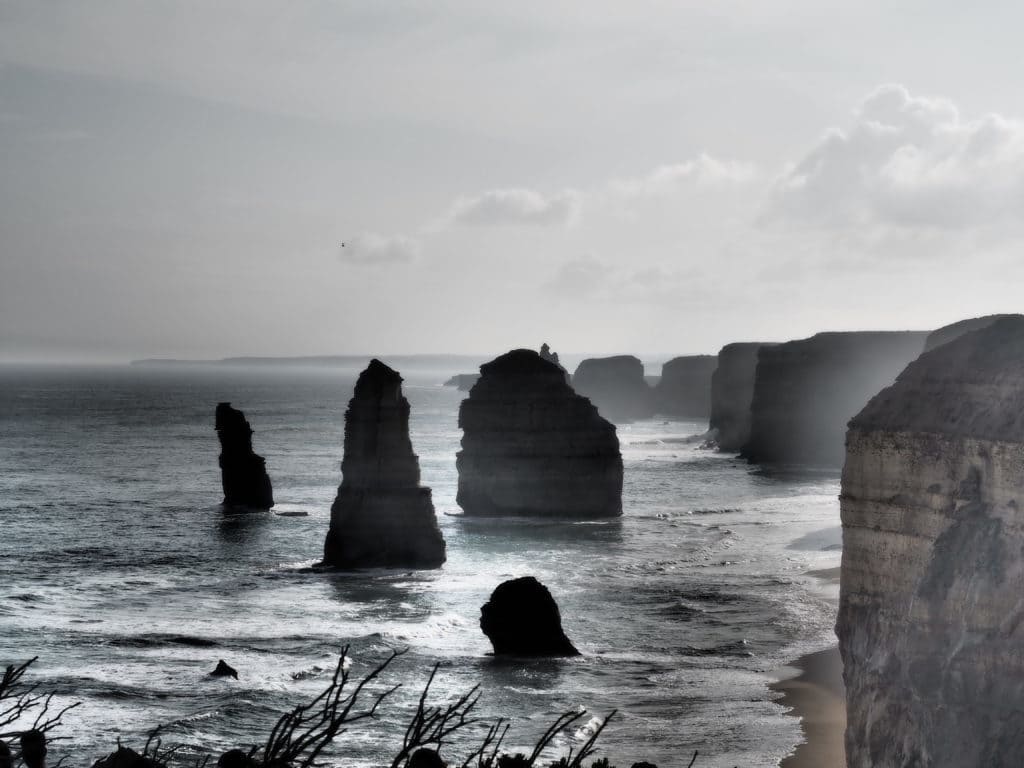
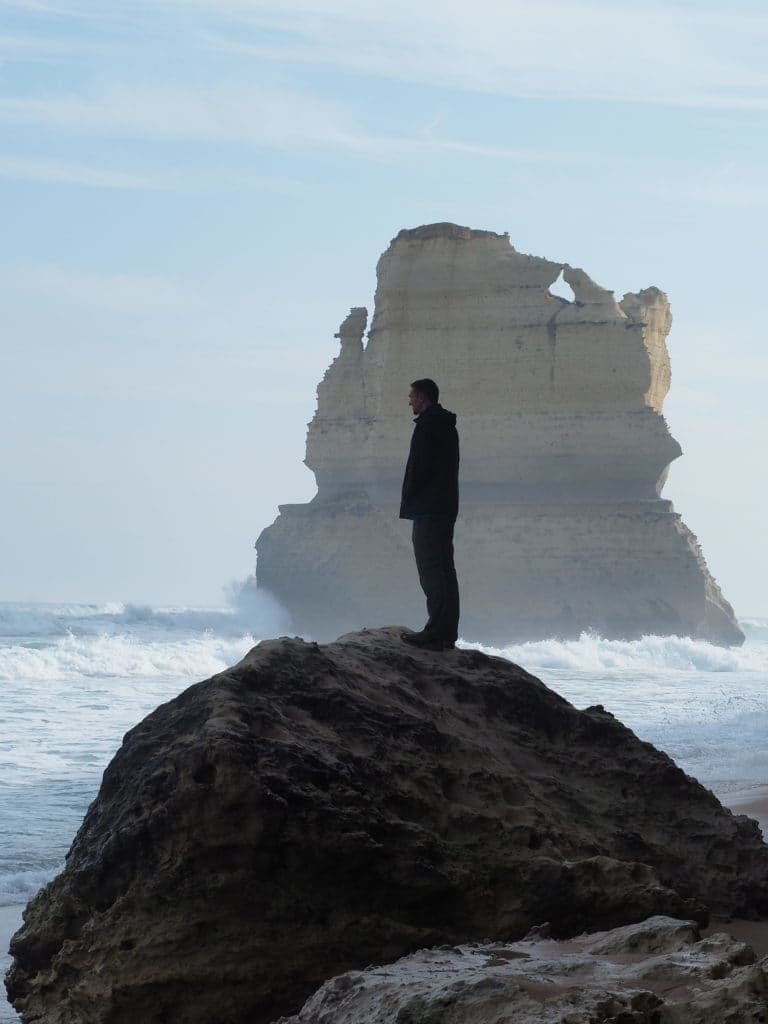
Tip #10 – Stick to Seaweed, Dummy
We stopped that evening at a place called Barwon Heads, a beautiful area where a river flows into the ocean at low tide and the ocean flows upriver at high tide (a tidal river). It was the perfect spot for a last ditch effort at catching some fish. I went out in the evening and in the morning, but as you can probably guess, I came up empty. The only thing I caught was a 10 pound chunch of seaweed which actually put up a pretty good fight!
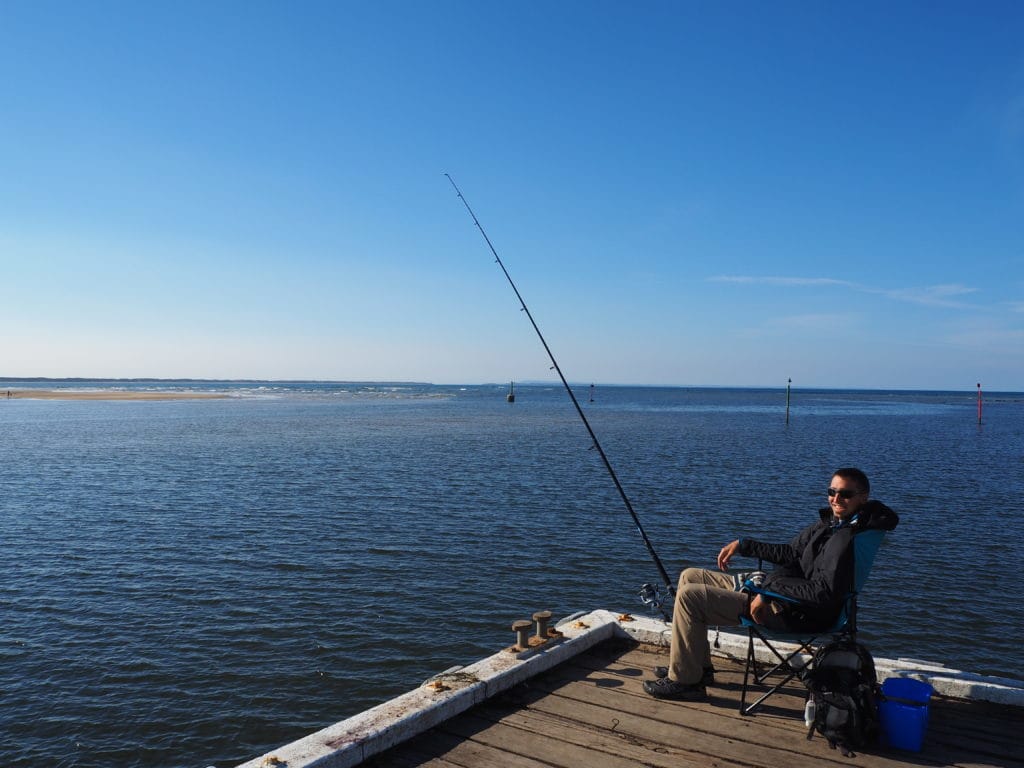
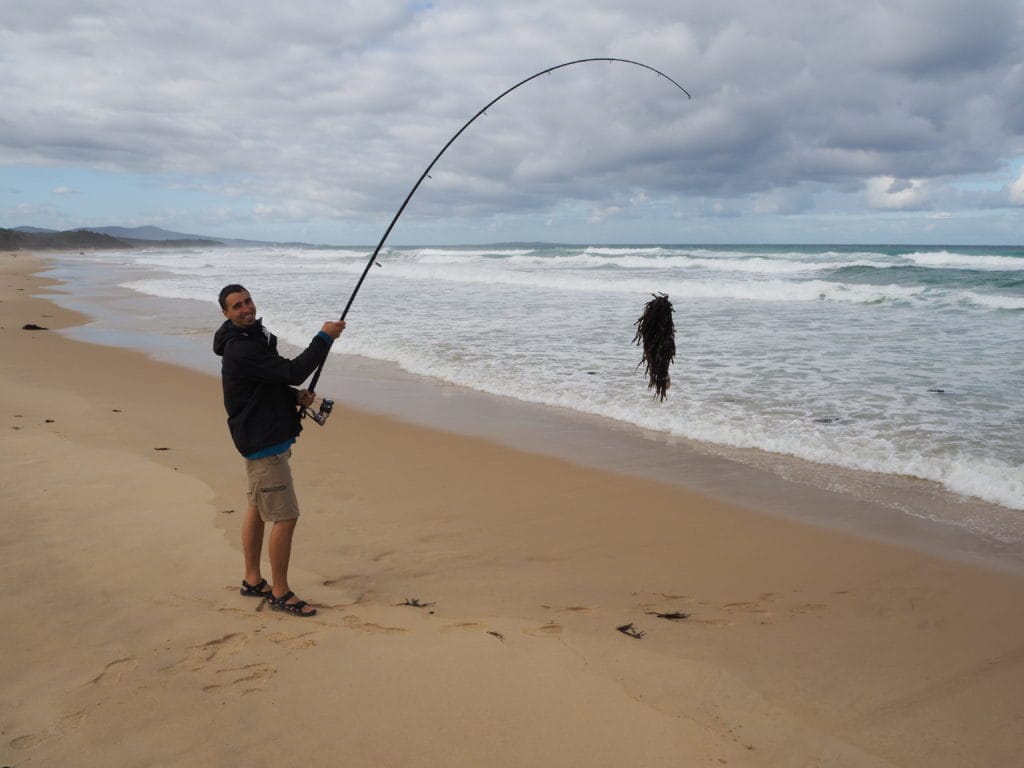
So, if you follow these 10 simple tips, you most likely won’t be able to enjoy the pleasure of reeling in a monster Trevally or Snapper along the Great Ocean Road, but at least you’ll have some pleasant scenery to look at!
Click here if you want to see more pictures of the Great Ocean Road


Comments
2 CommentsKaren
May 18, 2017This is ridiculous. And awesome. Had me laughing aloud repeatedly – in public! Makes me miss you both. xoxoxo
Phil Kieser
Jun 15, 2017🙂